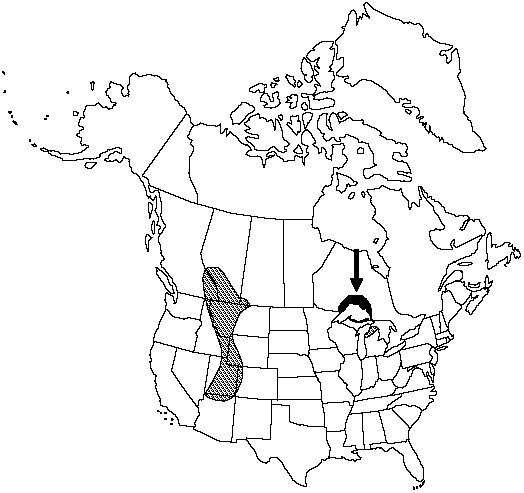Botrychium hesperium
Amer. Fern J. 71: 92. 1981.
Trophophore stalk 0–3(–10) mm, to 1/4 length of trophophore rachis; blade ± gray-green, dull, oblong-linear to deltate, 1–2-pinnate, to 6 × 5 cm, firm. Pinnae to 6 pairs, ascending, usually approximate or overlapping except in shade forms, distance between 1st and 2d pinnae not or slightly more than between 2d and 3d pairs, basal pinna pair commonly much larger and more divided than adjacent pair, lobed to tip, basal pair oblong to oblong-lanceolate with lobed margins, remainder broadly spatulate with entire margins or 1 or more shallow lobes, apex rounded, venation pinnate. Sporophores 1–3 pinnate, 2–3 times length of trophophore. 2n =180.
Phenology: Leaves appearing in midspring, dying in early fall.
Habitat: Grassy mountain slopes, snow fields, road ditches with willows, and sand dunes
Elevation: 200–2800 m
Distribution

Alta., B.C., Ont., Sask., Ariz., Colo., Idaho, Mich., Mont., Utah, Wyo.
Discussion
In the Rocky Mountains Botrychium hesperium grows often with B. echo, and in the Lake Superior region, with B. acuminatum and B. matricariifolium.
Selected References
None.